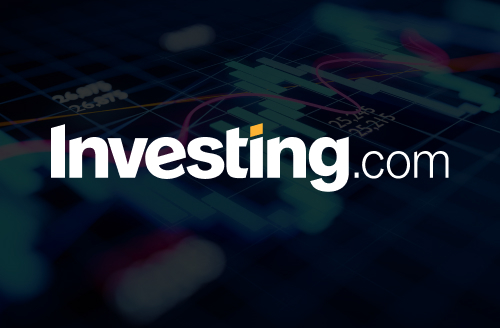
The Shiller P/E ratio hits 39.8x, matching 2000 bubble levels, while smart money hunts undervalued opportunities the crowd completely missed
Ever get that uneasy sense that you’re missing out while everyone else is cashing in?
Yeah, well, right now it feels completely different.
The ’s Shiller P/E ratio just hit 39.8 in September, a stone’s throw from the 44.2 peak that preceded one hell of a crash in 2000. This puts us at the third-highest valuation in 154 years of market history. But before you run for the exits, consider this: the money flowing into stocks doesn’t care about your valuation concerns.
$786 billion poured into ETFs this year alone, with active ETFs grabbing 37% of that massive flow. These represent institutional capital, creating a structural bid that keeps pushing prices higher, regardless of what traditional metrics suggest.
The Money Machine Won’t Stop
What we’re witnessing shows mechanical patterns.
Index fund flows totaled $363 billion through April, with Vanguard’s alone collecting $60 billion year-to-date. This creates a feedback loop where the biggest companies get bigger, and their stock prices follow. The “Magnificent Seven” now represents about 33% of the entire S&P 500, exceeding the dot-com peak’s 27%.
But here’s what distinguishes today from 1999: today’s leaders actually make money. Microsoft (NASDAQ: ), Apple (NASDAQ: ), Nvidia (NASDAQ: ) generate genuine cash flows and profits, which might justify some of the premium pricing.
Still, when Warren Buffett sells $127 billion worth of stocks in 2024, you pay attention.
Hidden Treasure in Plain Sight
While everyone obsesses over whether Tesla costs too much, small-cap stocks trade at a 17% discount to fair value. Value stocks sit near their most attractive levels compared to growth in 15 years.
Think about it. When was the last time you heard someone get excited about a small-cap healthcare stock?
Exactly.
Healthcare Gets Punched in the Gut
Policy uncertainty crushed the entire sector, creating some genuine bargains. Thermo Fisher Scientific (NYSE: ) dropped 18% this year despite pulling in over $43 billion in annual revenue and dominating the life sciences tools market. Medtronic (NYSE: ) offers dividend yields approaching 3% while trading at reasonable multiples for a company that makes essential medical devices.
These companies provide essential services, selling at prices that would’ve made value investors drool five years ago.
Energy’s Contrarian Moment
Oil stocks? Yeah, I know. Nobody wants to hear about them.
But Exxon Mobil (NYSE: ) and Chevron Corp (NYSE: ) are priced assuming oil stays around $55/barrel, well below current levels. Both pay dividends over 4% while generating serious cash flow. When everyone avoids a sector, that’s usually when the smart money starts accumulating.
ETF Strategies That Actually Make Sense
Instead of chasing the SPDR S&P 500 (NYSE: ) at elevated valuations, consider these alternatives:
Small-Cap Value: The Vanguard Small Cap Value ETF (NYSE: returned 33.81% over the past year with just a 0.07% expense ratio. The iShares S&P Small-Cap 600 Value ETF (NYSE: ) offers similar exposure for 0.18% in fees.
International Exposure: The Vanguard Total International Stock ETF (NASDAQ: ) gives you access to 8,587 global companies for 0.08% annually. European banks and emerging markets trade at significant discounts to US companies while benefiting from normalized monetary policy.
The Crash Question Everyone’s Asking
Will it crash? Probably. When? No clue.
Morgan Stanley, Deutsche Bank, and Evercore all warned about pullbacks in August. The S&P 500’s forward P/E of 23.7x and rising volatility suggest something must give. Even Fed Chair Jerome Powell recently warned that stocks are “fairly highly valued”.
But crashes follow no schedules. The median Wall Street forecast still targets the S&P 500 at 6,500 by year-end, implying 15% upside from here.
Markets can stay expensive longer than you can stay solvent betting against them.
Positioning for Reality
Smart money focuses on building portfolios that work in multiple scenarios.
Cash Position: Money market funds pay over 4% now. Having dry powder when opportunities emerge provides advantages when volatility hits.
Defensive Plays: Utilities, healthcare, and consumer staples all continue paying dividends when growth stocks struggle.
Geographic Diversification: When US markets become expensive, international developed markets and emerging economies offer currency diversification plus potentially better valuations.
The Long Game Still Works
Even if you bought at the dot-com peak in 2000, you’d have earned 8.1% annually over the next 25 years, including dividends. The market’s wealth-creation machine works through cycles and fluctuations.
Today’s market differs from previous bubbles because the underlying companies actually generate profits. Technology innovation, artificial intelligence adoption, and structural changes in how people work and consume create genuine economic value beyond financial engineering.
The valuation risk remains real. The S&P 500 has been this expensive only 5% of the time since its inception. But instead of making binary bets on market direction, focus on portfolio construction. Find value where others aren’t looking. Diversify across geographies, sectors, and market caps.
The crowd chases the same overpriced stocks while ignoring genuine opportunities trading at reasonable prices. History suggests that’s exactly when contrarians make their best returns.



